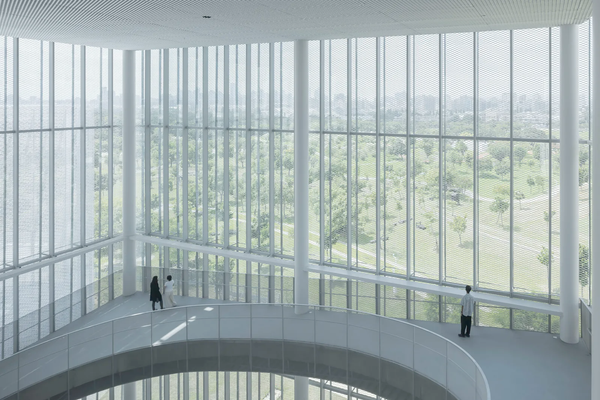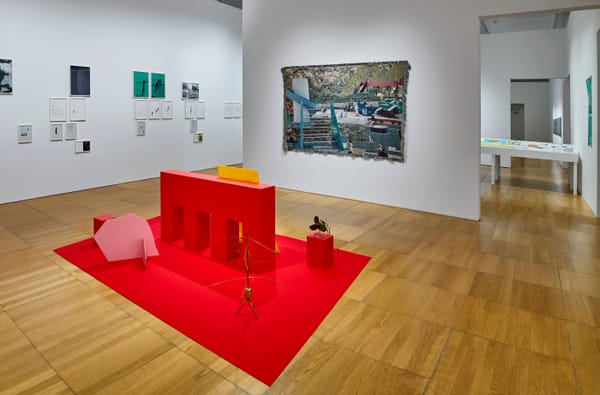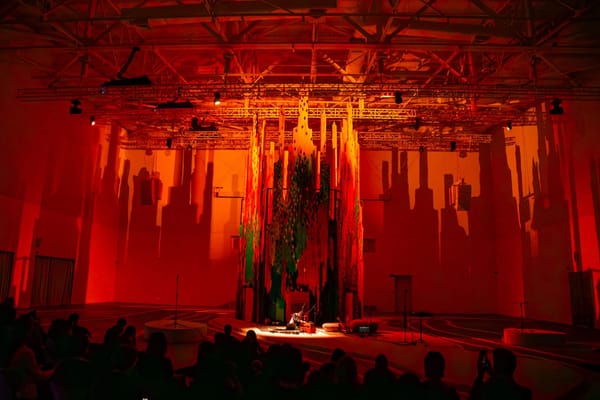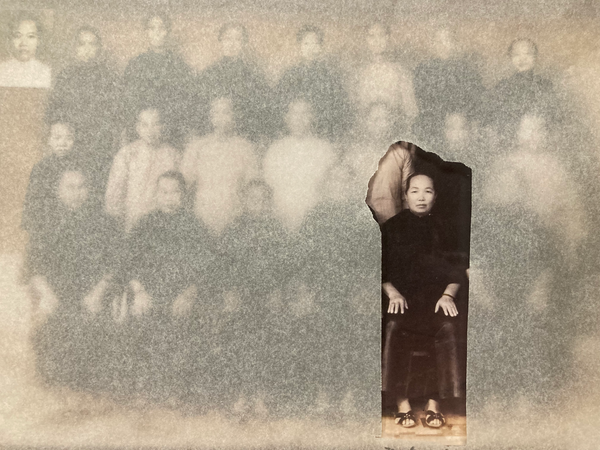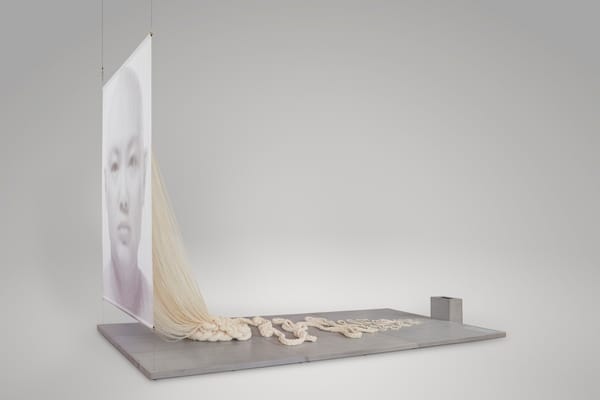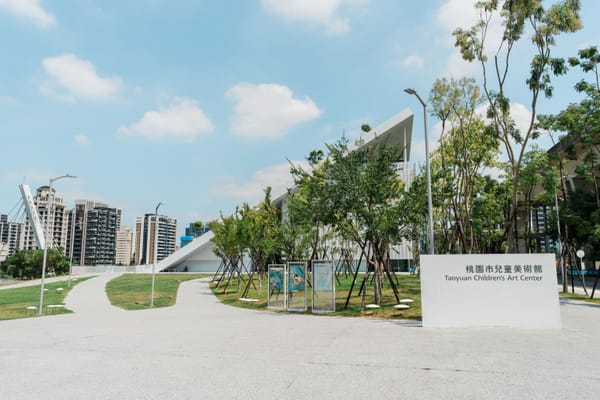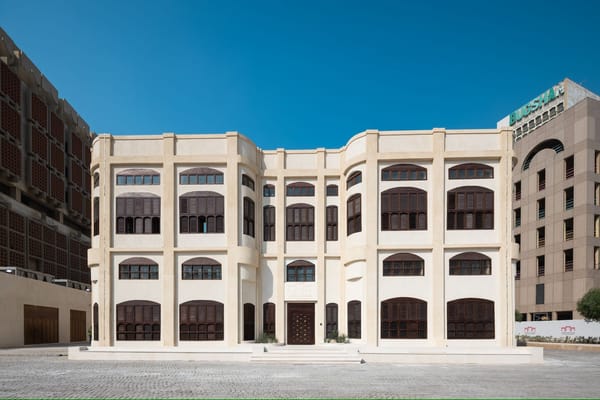Shows
Jennifer West’s “Is Film Over?”
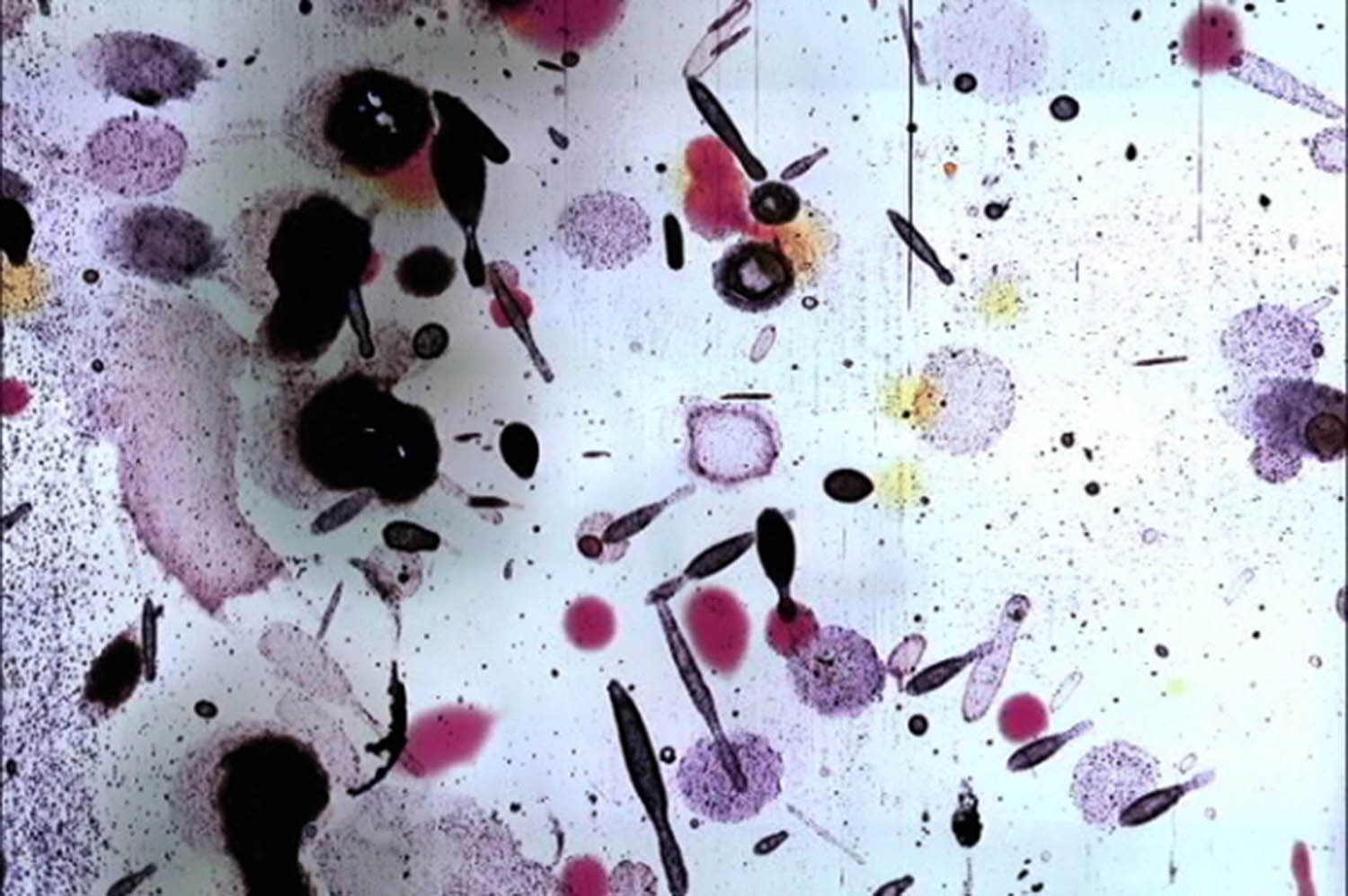

In cinemas and art galleries, film projections have been largely replaced by digital video. Film now occupies a niche position championed by a handful of traditionalists and enthusiasts. In its earliest days, the medium of film promised to be a reliable document of society in motion. However, with stylistic and technological advances, film has evolved into a creative mode of expression, becoming the medium of active storytelling. Some might even call it a distraction.
One of the characteristics of film is that it is a physical material; typically, a 35mm reel is 305 meters long, running for 11 minutes at 24 frames per second. Each frame is an individual picture; when viewed in sequence, the frames give off the appearance of motion. “Is Film Over?”, Los Angeles-based Jennifer West’s first exhibition in China, explored the continued relevance of film. West challenges the validity and reliability of the digital moving image because, unlike film, it is intangible and out of sync with the corporeal. Her method complicates the relationship between the entirety of the film reel and its separate frames. She proposes that the experience of the world requires a visceral response; as such, her technique is to pull the film out of the camera and interact with it physically. This enables her to augment the image on the screen with the evidence of a human touch.
With the film separated from the camera, West treats the reel of material as if it were a canvas, though one that is unusually long and narrow. She subjects the film to additive activities, such as drawing and painting, scratching and staining, or degrades the existing recorded image by weathering or exposing it to caustic agents. The marks she makes ignore the separation of frames, insisting on a flow that unites the temporal moments the entire reel or roll represents.
This is explicit in her 2009 work Lavender Mist Film/Pollock Film 1, in which West pins the entire length of film on the floor. As with Jackson Pollock’s work, she then spatters and sprays this with various paints. However, whereas Pollock strategically raised his painting from the ground to vertical space for his viewer, West takes the material produced on her studio floor and scans it for digitization. This process randomly splits up painted gestures into multiple frames, turning the artist's marks into transitory flashes. The effect translates the result of West's painting process from a tangible object into an artwork that requires a period of time for full viewing, such as the 46 seconds required to consume Lavender Mist Film from beginning to end.
In the exhibition, West’s approach was compounded by a presentation where five projections ran simultaneously, creating an overwhelming, immersive environment. This made it difficult to see one movie without other distractions, encouraging the spectator to respond to sensations evoked rather than rationalize the films' subjects.



As part of her practice, West also contrasts the mechanical nature of cine-cameras and film projectors with the immaterial quality of digital video. She proposes that the mechanical tools are analogues of human life, that they capture the image of the world directly and with empathy, whereas the electrical circuits of digital video equipment are indirect, designed to process rather than record. Although digital video appears seductively real, because it is attuned to accurate mimesis, its relationship to human subjects is unfathomable; everything is turned into fluctuating electrical impulses. Contemporary video technology produces greater clarity but maintains detachment. By contrast, the images in her Dawn Surf Jellybowl Film (2011) are deliberately degraded by a series of intimate, performative acts. The original film, showing sequences of surfers, was dragged across the beach and taken into the ocean. The result is a record in two registers and rhythms. The film shows semi-blurred images of the surfers close up, standing with their boards, or in the distance riding waves, but the relentless interference of frenetic discoloration and scratches disrupts our view. In the process of digitization, a clinical order is reinstated to the material. The process clones the image, but its unerring accuracy is disconnected from the spontaneous human acts that have altered the film and perverted the witness report of the movie camera. The extended title of the work includes a litany of the materials and procedures involved—16mm film negative sanded with surfboard shaping tools, sex wax melted on, squirted, dripped, splashed, sprayed and rubbed with donuts, zinc oxide, cuervo, sunscreen, hydrogen peroxide, tecate, sand, tar, scraped with a shark’s tooth, edits made
by the surf . . .
West takes her methodology to its conclusion in Salt Crystals Spiral Jetty Dead Sea Five Year Film (2013). The images originally filmed by West for this work were of Robert Smithson’s Spiral Jetty (1970), a famous piece of land art constructed on the Great Salt Lake near Rozel Point in Utah. The images have been completely effaced by steeping the reel of film in salt water and a clay bath over a five-year period. The interaction forms a cozy chemical connection with the site of Smithson’s sculpture, but forfeits access to the appearance of Smithson’s work. Faced with the ubiquitous accuracy of digital video, West asks: “What does a true document look like?”

Jennifer West's “Is Film Over?” is currently on view at Yuz Project Room, Shanghai, until May 28, 2017.
